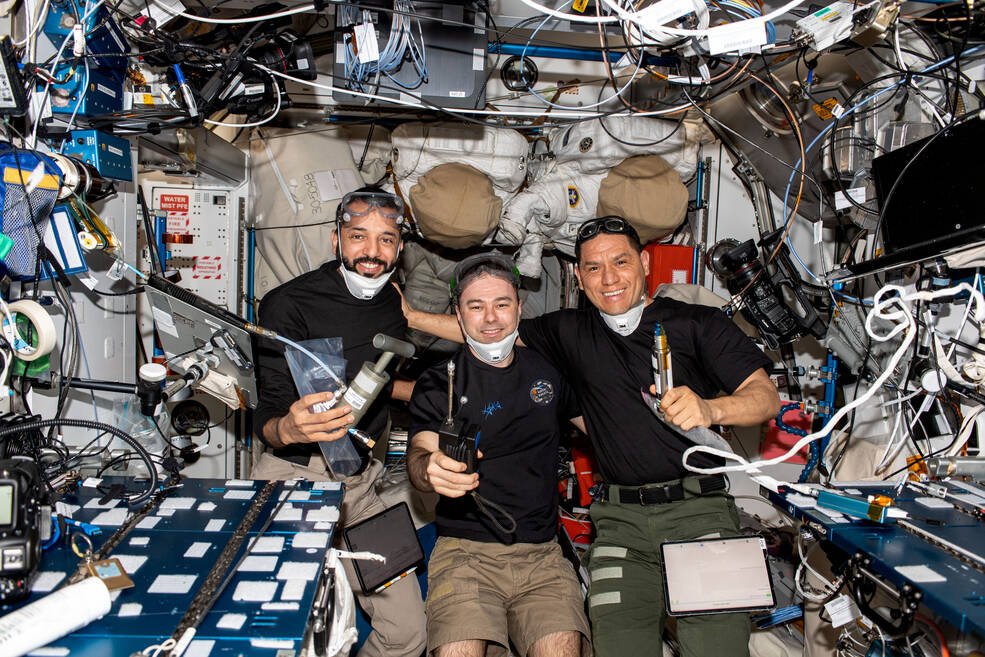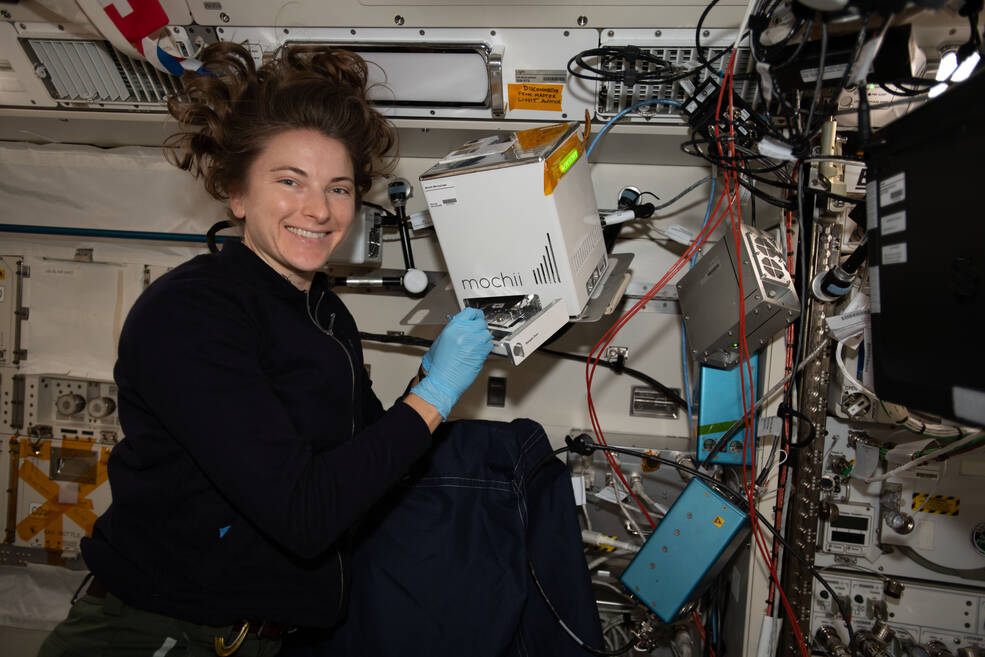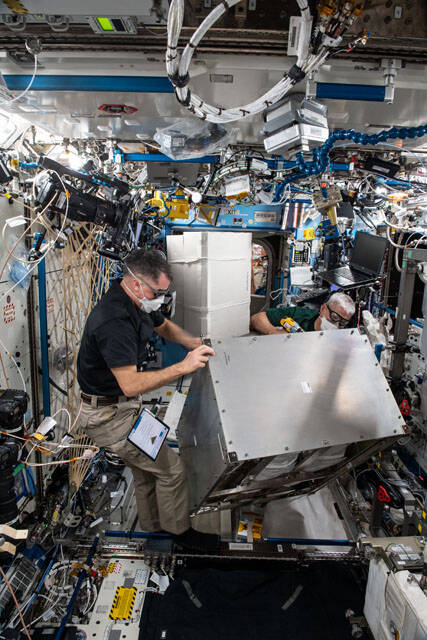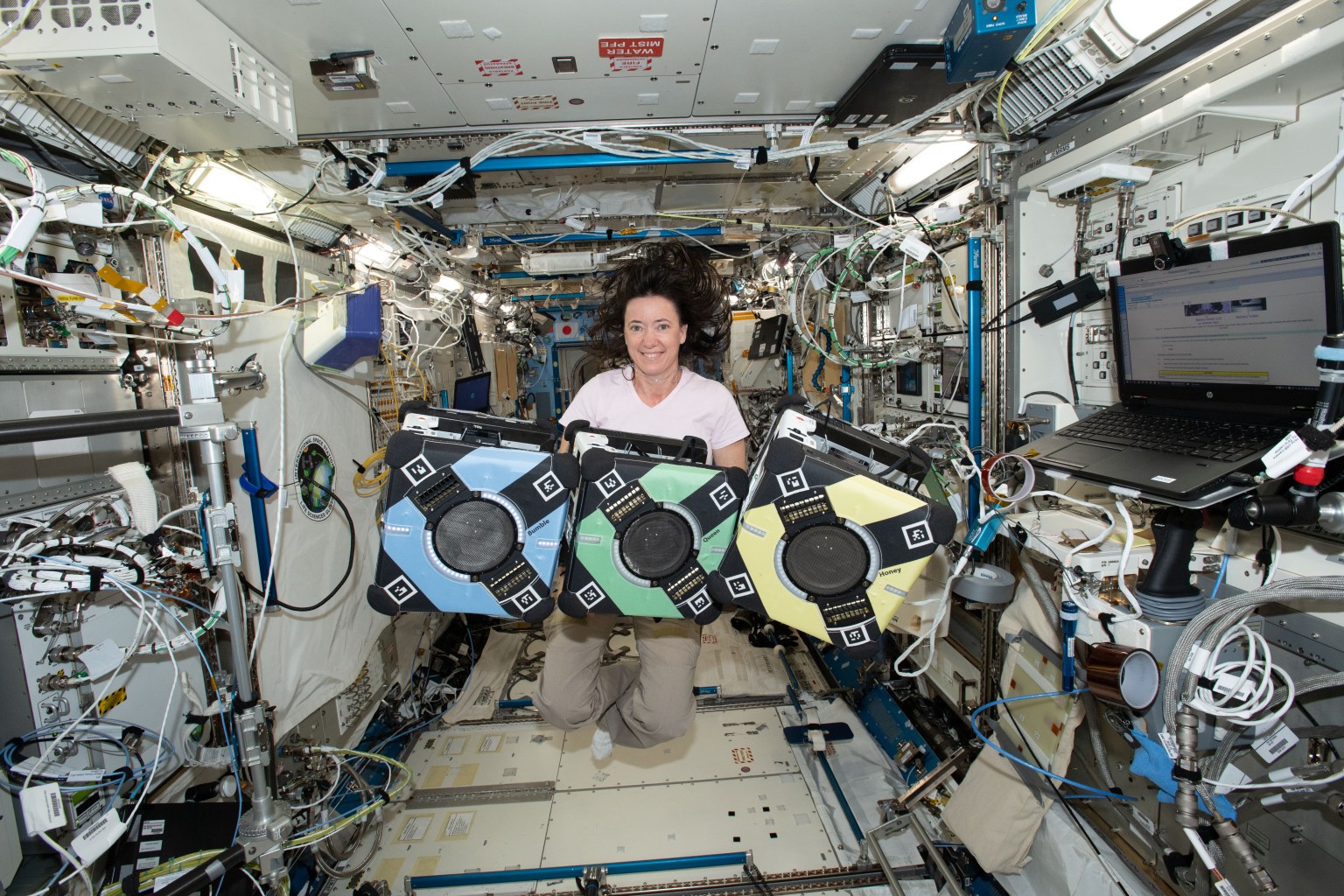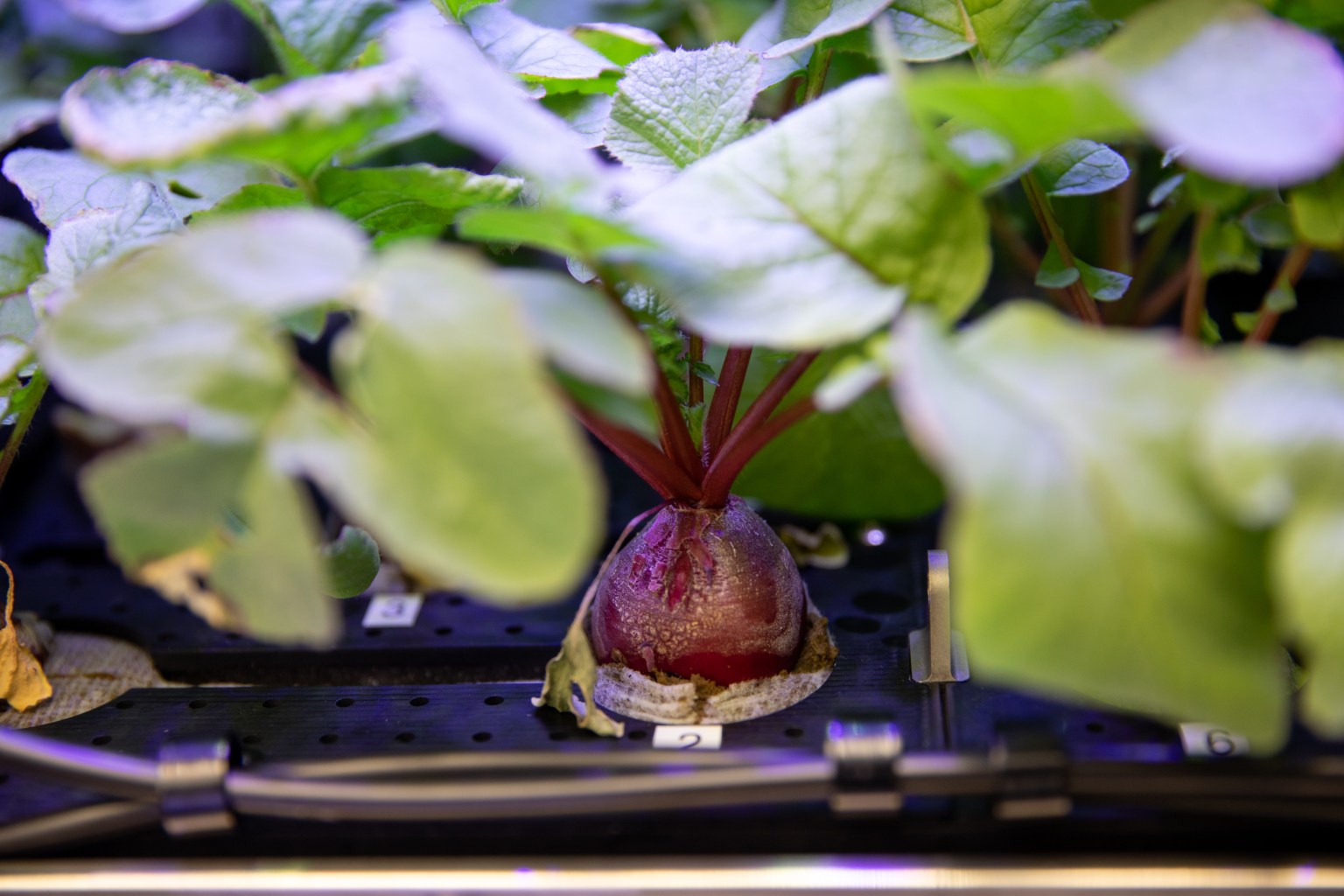Crew members aboard the International Space Station conducted a variety of scientific investigations during the week ending August 4, 2023, including collecting samples for ANITA-2.
Monitoring and maintaining the quality of the air inside the space station is essential to ensure crew health and comfort and proper functioning of equipment. These activities become more important as mission duration increases. ANITA-2, an investigation from ESA (European Space Agency), uses a compact gas analyzer to automatically monitor 33 trace contaminants in the station’s ambient air. The device also can detect unknown substances that can be analyzed later on the ground. ESA confirmed the type of spectroscopy the instrument uses as the best technology for continuous monitoring of cabin air and tested the effectiveness of its operation.
Another issue in spacecraft air is suspended particles, also known as aerosols, inside a spacecraft. Sources of aerosols include lint from clothing, sweat droplets from crew members, particles from personal care and cleaning products, and particles from use of equipment such as laser printers and exercise devices. Airborne Particulate Monitor (APM) demonstrates an instrument for measuring and quantifying the concentration of particles in spacecraft air. The data shed light on the sources of such particles and show whether current filtration systems are working properly.
Returning particle samples to Earth for analysis creates delays that can leave the crew and vehicle at risk. Mochii is a miniature scanning electron microscope that measures particles on the space station in real time, a critical need for future missions that go deeper into space where sending back samples is not possible. Researchers verified the performance of Mochii on the space station by analyzing a Martian meteorite previously analyzed on the ground.
Trace gases also represent a potential problem in cabin air. Four Bed CO2 Scrubber demonstrates a technology that upgrades the current system for removing carbon dioxide (CO2) from the atmosphere on the space station. The system operated reliably and used less power than current systems, but its mass still needs to be reduced for use on future missions. The space station provides a crucial platform for testing such systems.
The Thermal Amine Scrubber investigation also tests a method to remove carbon dioxide from station air using actively heated and cooled beds of amine, an organic compound derived from ammonia. JAXA (Japan Aerospace Exploration Agency) is testing a carbon dioxide removal system on the space station that uses both sorbents, materials that absorb liquids or gasses, and desiccants, materials that remove moisture from the air. Controlling carbon dioxide levels helps protect crew members from symptoms of buildup of the gas, which include fatigue, headache, breathing difficulties, strained eyes, and itchy skin.
An ongoing investigation, OGA H2 Sensor Demo, tests new hydrogen sensors for the space station’s oxygen generation system (OGS). The OGS produces breathable oxygen via electrolysis – separating water into oxygen and hydrogen. The hydrogen is vented overboard or sent to a processor and recombined with waste carbon dioxide to produce water. The sensors currently used to ensure that no hydrogen enters the cabin air are sensitive to humidity and can become less precise over time. The new sensors are expected to be more stable and may be integrated into an advanced OGA for future exploration missions.
Spacecraft Atmosphere Monitor demonstrates a small device to measure trace volatile organic compounds in cabin air. The instrument continuously transmits data back to the ground research team for analysis.
This research helps ensure that crew members have safe and adequate air to breathe, and that poor air quality does not affect the function of equipment. The monitoring technology used on the space station also has applications for environmental and air quality monitoring in closed environments on Earth.
John Love, ISS Research Planning Integration Scientist
Expedition 69




























